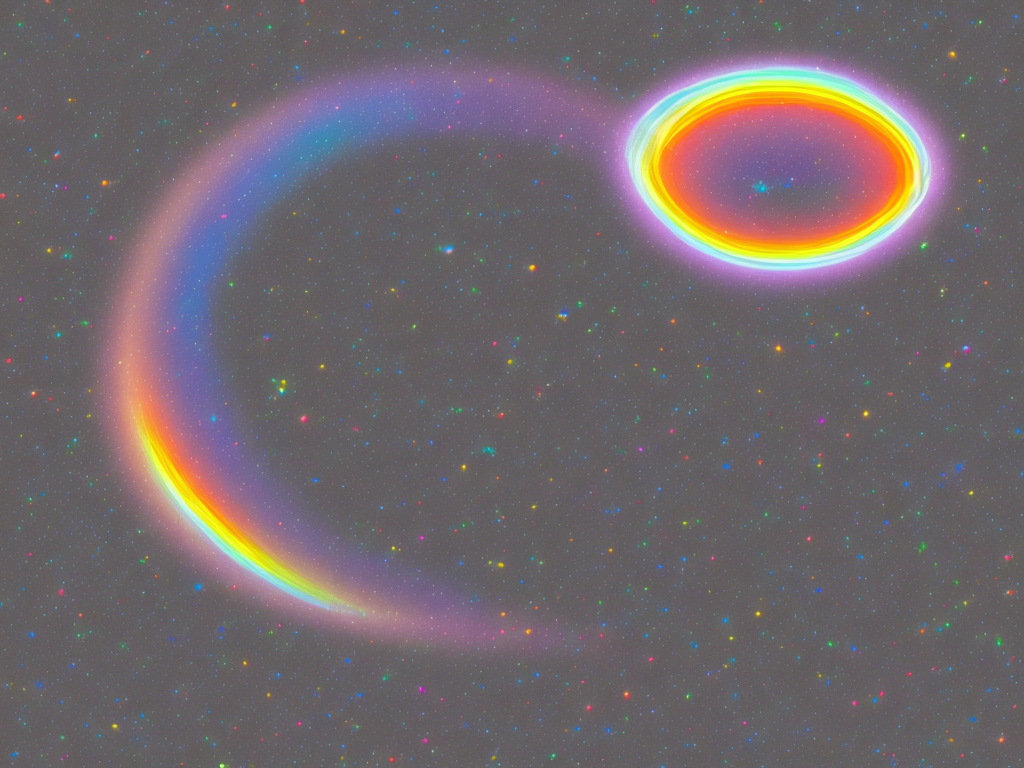
Rainbows are one of the most beautiful natural phenomena and are a fascinating sight to behold. However, there are actually two types of rainbows that are commonly observed, known as primary and secondary rainbows. While both types of rainbows may seem similar at first glance, there are some fundamental differences between them that are important to understand. In this essay, we will discuss the difference between primary and secondary rainbows in detail.
Primary Rainbow:
The primary rainbow is the most commonly observed type of rainbow, and it is formed when sunlight is refracted, or bent, as it passes through a raindrop. When the light enters the raindrop, it is bent, or refracted, due to the change in speed caused by the change in medium. This bending of light causes the light to separate into its individual colors, creating a spectrum of colors from red to violet, known as a "dispersion." The dispersion causes the light to fan out into an arc, with the red light on the outer edge and the violet on the inner edge. The arc is the primary rainbow and appears as a semicircle with red on the top and violet on the bottom.
The formation of a primary rainbow requires three conditions to be met: 1) there must be raindrops in the air, 2) the observer must be positioned between the raindrops and the sun, and 3) the sun must be relatively low in the sky. The angle of incidence of the Sunlight should be approximately 42 degrees.
Secondary Rainbow:
The secondary rainbow is a much fainter and less commonly observed type of rainbow, compared to the primary. While the primary rainbow is caused by a single internal reflection and refraction, the secondary rainbow is caused by two internal reflections and one refraction in a raindrop. The light enters the raindrop, is refracted, and then reflected off the inside surface of the raindrop. The reflected light is then refracted again as it exits the raindrop, causing the individual colors to disperse again. The difference between primary and secondary rainbows is that the light in the secondary rainbow reflects off the inside surface of the raindrop twice, creating a smaller arc with its colors reversed.
The secondary rainbow has a wider arc compared to the primary, so it appears as a larger and fainter semicircle outside of the primary rainbow. The colors are also reversed, so that red is on the bottom and violet is on top. The secondary rainbow is much fainter than the primary as the light exiting the raindrop is internally reflected and refracted, causing more dispersion and absorption by the raindrop.
Formation:
The formation of a secondary rainbow is more complex because it requires a more specific set of conditions to occur. The conditions required for a secondary rainbow to be seen are the same as primary. However, the internal reflection of light in the raindrop occurs twice for the secondary rainbow, which means that the light must enter the raindrop at a steeper angle. This makes the formation of the secondary rainbow more rare because the angle of incidence must be 50-51 degrees. When a secondary rainbow is formed, its arc is always larger than that of the primary, and it always appears outside the primary rainbow.
Colors:
One of the most notable differences between the primary and secondary rainbow is the order of the colors. In the primary rainbow, red is always on the outer edge and violet on the inner edge. In the secondary rainbow, the colors are reversed, with violet on the outer edge and red on the inner edge. This difference in color order is due to the additional reflection that occurs in the secondary rainbow. The additional reflection causes the light waves to be flipped, and as a result, the colors are seen in reverse order.
Brightness:
The primary rainbow is much brighter and more vivid than the secondary rainbow. This is because the primary rainbow is caused by a single reflection and refraction of light, which results in less loss of light energy compared to the secondary rainbow, which is caused by two internal reflections and one refraction, leading to significant absorption of light. Hence, the secondary rainbow appears much fainter and is much harder to observe than the primary rainbow.
Conclusion:
In conclusion, primary and secondary rainbows are fascinating natural phenomena that are formed when sunlight is refracted, reflected, and dispersed by raindrops in the air. While both types of rainbows may seem similar, they are fundamentally different, with distinct differences in their formation, color order, and brightness. The primary rainbow is formed by a single reflection and refraction, is brighter and more vivid, with the colors in the normal order. In contrast, the secondary rainbow is formed by two internal reflections and one refraction, is fainter, with the colors in reverse order. Overall, both types of rainbows are a mesmerizing and breathtaking spectacle of nature, and observing them is a truly awe-inspiring experience.
 Self-Instruct
Self-Instruct